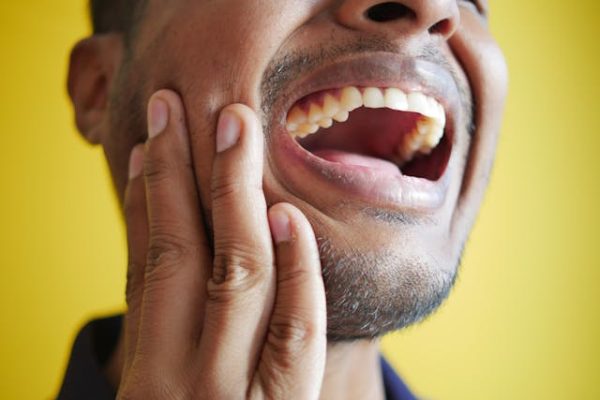Introduction: It’s More Than Just a Sore Jaw
I still remember the first time it happened. I was yawning—just a normal, lazy Saturday morning stretch—and suddenly, a sharp click echoed from my jaw. Then came the tension. Then came the pain. I brushed it off, thinking I probably slept weird. But weeks passed, and the clicking turned into aching. Eating became awkward, then painful. Speaking felt tight. Smiling? Forced.
That experience is far more common than most people think.
Jaw pain creeps in silently. One moment, you’re fine. Next, your daily routine is interrupted by stiffness, discomfort, and a quiet sense that something just isn’t right. The most frustrating part? Jaw pain isn’t always caused by what you’d expect.
In this article, we’ll explore the true underlying causes of jaw pain, how you can treat it effectively, and whether jaw surgery might be the solution you never considered but always needed.
The Mechanics of the Jaw – A Delicate Balancing Act
Your jaw, or more precisely your temporomandibular joint (TMJ), is one of the most complex joints in your body. It connects your jawbone to your skull and allows you to chew, speak, yawn, and express emotions. But unlike your knee or elbow, the TMJ is used constantly, often unconsciously, making it prone to overuse, misalignment, and inflammation.
Most jaw pain stems from an imbalance between muscles, bones, and bite function. The causes may be mechanical, habitual, emotional, or even skeletal. Let’s apply the MECE principle—Mutually Exclusive, Collectively Exhaustive—to break it all down without overlap.
Category 1 – Muscle and Habit-Driven Pain
Bruxism – Grinding Away Your Comfort
One of the most common causes of jaw pain is bruxism, or unconscious teeth grinding and clenching. It often occurs during sleep but can also show up during periods of high stress or focus. Many patients don’t even realize they grind until their dentist sees flattened teeth or they wake up with jaw stiffness and headaches.
I personally didn’t know I was a grinder until I caught myself clenching while driving in traffic. It was my body’s way of channeling stress—through my jaw.
Chewing Habits and Oral Fixations
Chewing gum excessively, biting nails, or constantly chewing on pens might seem harmless, but they place strain on your jaw muscles. These small, repetitive movements condition the jaw into unnatural positions over time, causing fatigue and misalignment.
Poor Posture and Forward Head Position
When we lean over screens for hours—phones, laptops, TVs—our head shifts forward. This posture pulls on the neck, which affects the muscles connected to the jaw. Over time, this cascade of strain can pull your jaw out of its natural alignment.
Category 2 – Joint and Bone Issues
TMJ Disorders – When the Joint Itself Is the Problem
TMJ disorders can range from mild clicking to severe jaw locking. Sometimes the cartilage inside the joint slips out of place, or inflammation sets in from trauma or overuse. You might notice your jaw popping, getting “stuck,” or feeling sore after meals. If left untreated, it can lead to arthritis of the jaw joint.
Skeletal Misalignment – A Problem That Requires More Than a Night Guard
In more severe cases, jaw pain is rooted in structural imbalance. This means your upper and lower jaws don’t align properly, either due to genetics or developmental issues. These cases often result in chronic pain, sleep apnea, and even psychological stress due to facial asymmetry or social discomfort.
In situations like this, orthognathic (jaw) surgery is often the most effective long-term solution—not for cosmetic reasons, but for function and quality of life.
Category 3 – Dental and Medical Triggers
Malocclusion – When the Bite Doesn’t Fit
An incorrect bite causes uneven pressure distribution. Imagine walking with one leg longer than the other—you’d develop hip or back pain, right? The jaw functions the same way. A poor bite forces certain muscles to overcompensate, leading to fatigue and inflammation.
Sinus or Ear Infections
Because of the jaw’s proximity to the sinuses and ears, infections in these areas can sometimes mimic jaw pain. It’s important to rule these out before jumping to TMJ diagnoses.
Arthritis and Autoimmune Conditions
Jaw joints, like any other joints, can be affected by osteoarthritis or rheumatoid arthritis. Autoimmune inflammation damages the cartilage over time, making movement painful and limited. This often requires both medical treatment and physical therapy to manage.
Treatment Paths – From Simple Fixes to Surgical Solutions
Behavioral Changes and Physical Therapy
For mild to moderate pain, small changes can make a big impact. This includes posture correction, reducing stress, cutting back on chewy foods, and using hot/cold compresses. Physical therapy and jaw exercises can restore muscle balance and mobility. At Nuffield Dental, we can help guide you through these steps and provide tailored treatment options to support your recovery.
I found relief by practicing controlled breathing, replacing gum with herbal tea, and learning to relax my tongue and jaw consciously throughout the day.
Dental Intervention
For bite-related issues, orthodontics or custom dental appliances may help redistribute pressure. A well-fitted night guard can reduce grinding damage. In more complex cases, orthodontic correction might be necessary.
Orthognathic Jaw Surgery – The Final Step for Lasting Relief
When jaw pain stems from skeletal issues—like a severe underbite, overbite, or asymmetry—jaw surgery becomes the most effective long-term fix. This isn’t a cosmetic decision, though improved facial balance is often a result.
Jaw surgery corrects the alignment of the upper and lower jaws, restores proper bite function, and relieves chronic pain. Many patients also report improvements in breathing, speech, and sleep after recovery.
It’s not an easy decision, but for many—including myself—it was life-changing.
Let’s Do the Math: The Cost of Ignoring Jaw Pain
Let’s say you grind your teeth for just 5 hours a night while sleeping.
That’s: 5 hours × 365 days = 1,825 hours/year of pressure on your jaw joint.
If untreated, that could lead to:
- Dental repair costs: $1,000–$5,000
- Bite correction or orthodontics: $4,000–$8,000
- Jaw surgery (if needed): $20,000–$40,000 (often partially covered by insurance)
Now compare that to:
- Posture improvement: Free
- Night guard: $100–$500
- Early dental consultation: Around $150
Prevention is always the more affordable and sustainable path.
Conclusion: Don’t Wait for the Click to Become a Crisis
If your jaw clicks when you yawn, aches after a meal, or tightens when you’re stressed, your body is sending you a message. Don’t ignore it. That small discomfort could be the tip of something much larger, especially if it’s been going on for weeks or months.
Jaw pain doesn’t fix itself. But it can be fixed. Whether it’s adjusting habits, seeking dental support, or considering surgical correction, there’s a clear path toward relief—and more importantly, peace of mind.
I’ve walked that path myself. And while it wasn’t always easy, I can now say confidently: it was absolutely worth it.
FAQs About Jaw Pain and Surgery
How Do I Know If I Need Jaw Surgery?
If you experience chronic jaw pain, difficulty chewing, jaw locking, speech issues, or facial asymmetry that isn’t resolved by non-surgical methods, a consultation with an oral surgeon or orthodontist can help determine if surgery is needed.
Is Jaw Surgery Painful?
Like any surgery, discomfort is expected, especially during the initial recovery. However, pain is well managed with medication, and the long-term relief far outweighs the short-term inconvenience.
What Is the Recovery Time?
Most patients return to work or school within 2–4 weeks. Complete healing and adjustment can take several months, with visible results improving week by week.
Can I Prevent Jaw Pain?
In many cases, yes. Practicing good posture, reducing stress, avoiding repetitive chewing, and addressing dental issues early can prevent chronic jaw pain from developing.


